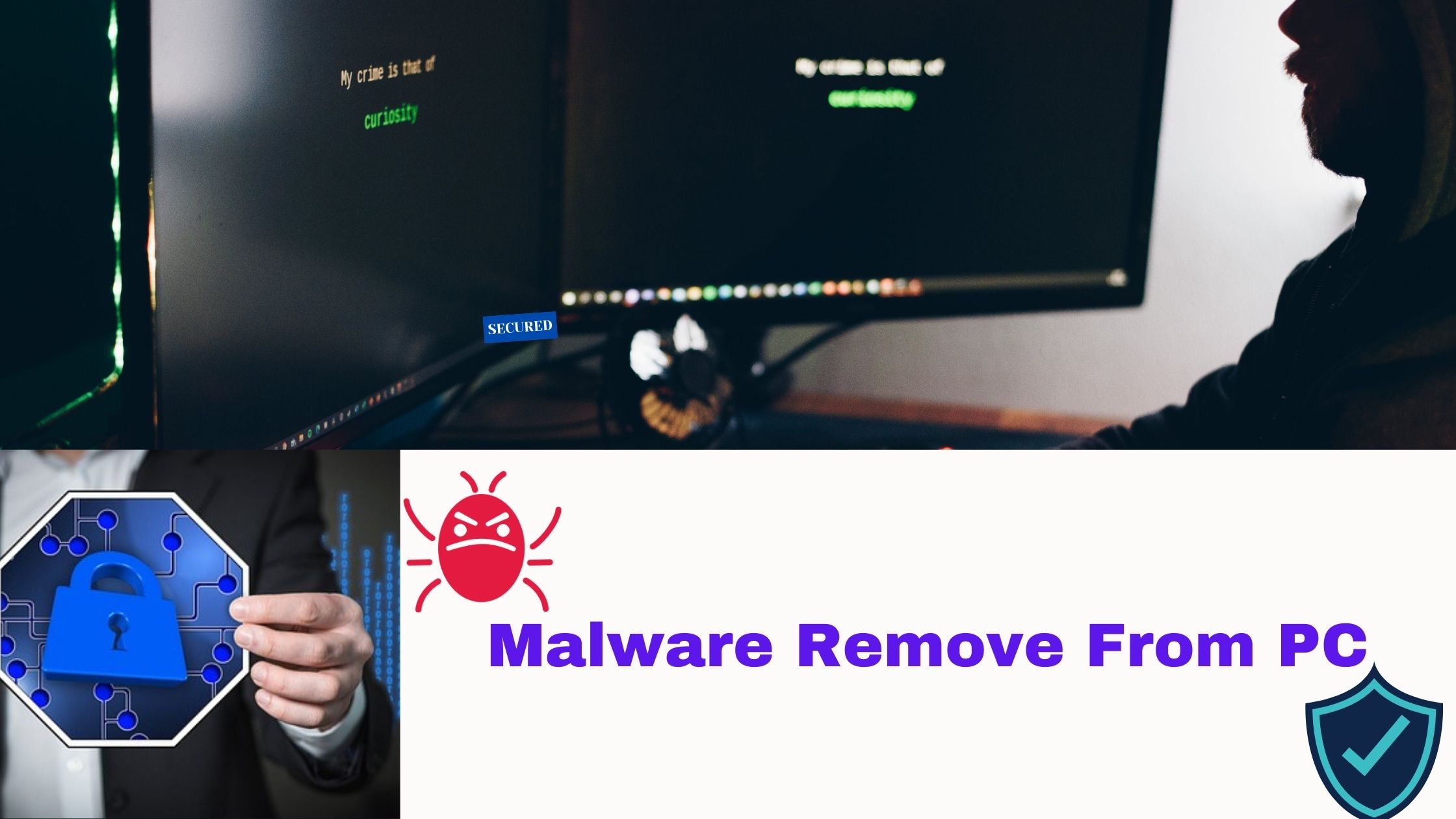What is a Trojan (Trojan horse) and how to remove it from your PC
This is an example of a malicious program known as a Trojan horse, which masquerades itself as an ordinary program and is used to infect a computer system.
Trojan or Trojan horse is a type of malicious software that takes the form of an ordinary application to infect a device by disguising itself as a common application. Cybercriminals, hackers, or security institutions are widely known to use this type of malware to discreetly infiltrate computers that are not being monitored. It should be noted that even though Trojans are a common digital threat, they can be recognized and protected against in a number of ways. There are many antivirus software programs, for example, that are capable of blocking and preventing this type of threat from entering the computer, but it is important to know how to deal with these types of threats.


What is a Trojan (Trojan horse)?
A list of six of the most important topics about Trojans, also known as Trojan horses, is provided below. In the following section, you will find a list of the topics that will be covered in this article.
- What Are Trojans And How Do They Work?
- Are Trojans Viruses Or Malware?
- Common Types Of Trojans
- How To Know If Your Pc Has A Trojan
- The Best Way To Remove Trojans From Your Computer
- How To Protect Yourself From Trojans?
1. What are Trojans And How do They Work?
What is the meaning of Trojans? This is a type of malicious software that disguises itself as a piece of common software, enabling an intruder to infect a computer without the victim being aware of it. The Trojan is capable of stealing data, destroying files, reading passwords, manipulating sensitive data, compromising the performance of the device, and even opening the door for another piece of malware once in the system.
There is a myth about a Trojan Horse, which is the name given to this malicious software. According to this myth, the Greeks gifted the Spartans with a huge hollow horse made of wood that was filled with hidden soldiers hidden inside of it. Initially named as the Trojan horse malware because of the way it infects devices, the trojan is often hidden within common software, so that an unsuspecting user is unable to detect it when it is downloaded. Additionally, there are trojans that completely conceal themselves as executable programs and are nearly indistinguishable from executable programs to the average user.


2. Are Trojans Viruses Or Malware?
It is important to note that Trojan horses are not viruses, contrary to popular belief. It is mainly in the mode of dissemination of the two that the two differ from each other. Computer viruses create copies of themselves, just like viruses found in nature, to be able to spread to other computers, whereas Trojan horses do not have the ability to self-replicate, just as viruses do not have the ability to self-replicate. An infected computer must be manually installed with a Trojan before it can be infected by it.
There is no doubt that both of these viruses are malware, regardless of their differences. It is true that malware is a general term used to describe software that is designed to cause harm to a machine or a user, and it includes things like viruses, trojans, phishing emails and applications, worms, ransomwares, spywares, adwares, and many more.
3. Common Types Of Trojans
The way Trojans behave within a device is one of the ways they are classified as Trojans. A Trojan horse is one of several types of malware that operate independently or in cooperation with other type of malware, in this article, you will learn what the most common types are:
Backdoor
The Backdoor Trojan horse, or backdoor as it is commonly called, is malware developed to allow a hacker to operate a device remotely through a backdoor. It is also well known that malware of this type can be used to attack as well as control several devices at once.
Exploits
A trojan attacking a device is known as a trojan exploiting vulnerabilities within the programs on the device to attack the device. A computer system that has been infected with this malware has the purpose of weakening its security and facilitating actions such as information theft and the installation of other malware as a result.
Rootkit
There is a Trojan called a rootkit that is used for the purpose of camouflaging malware on a computer system. There has been an increase in hackers utilizing Trojan horses as a way of hiding malicious software on machines, which extends the scope of their actions on the device without it being noticed by the user.
Dropper/Downloader
In addition to being able to hide other malware inside a device, the Trojan-Dropper or Downloader may be able to insert other malicious programs within the device, like the rootkit, but unlike the rootkit, the Dropper may be able to insert other malicious programs into a device as well.
Banking Trojans
During the past few years, banking Trojans, or Bankers, have been used by cybercriminals to collect information about their users’ banking accounts, such as credit cards, passwords, credentials and access to their accounts.
Trojans DDoS
A Trojan-DDoS is a program that performs Denial of Service attacks in the form of a Trojan. It is through this malware that cybercriminals are able to steal information and infect many different devices that they are able to use to attack a specific address, resulting in overload and the failure of the target.
Fake antivirus Trojans
There are several types of malware that are used for the purpose of simulating the action of antivirus software. Known as fake antiviruses, they are Trojan horses that, with the justification of removing nonexistent threats on users’ systems, attempt to extort money from them.
Trojan GameThief
There is a type of Trojan horse known as GameThief Trojan horse – which in direct translation means game thief in the game world – that is often found in online games that steal users’ accounts.
Trojan IM
This form of IM Trojan which was first introduced in the 1990s is an acronym for instant messages (or “instant messages” as a direct translation) and is a type of malware that steals passwords for various messaging applications such as Messenger, Skype, and Discord, among others.
Trojan Ransom
The purpose of this malware is to invade the user’s device and extract money from him. As soon as the device has been infected, the data on the device is blocked, creating a ransom demand on the screen that demands payment to be able to unlock it.
Trojans SMS
Smartphones are one of the main targets of SMS Trojans. As a result of this malware, the infected device sends SMS messages at a higher than usual sending rate, to unknown numbers, without the user’s consent, causing excessive charges because these SMS messages are sent without the user’s consent.
Spy Trojan
Trojan-Spy, or Trojan-Spy-in-Case, is a type of malware developed by cybercriminals that helps them spy on targets. Among the things the malware can do are record the screen, track the user’s keystrokes, track the device, and the like in order to gain access to the user’s information.
Trojan Mailfinder
It is common for cybercriminals to use MailFinder Trojans in order to gather information from email addresses on the computer of their victims by intercepting their communications.
4. How to know if your PC has a Trojan
A computer that has been infected with a Trojan will most likely display a decrease in speed as a sign of the infection. Malware may infect a device that suddenly starts freezing, crashing or having a blue screen, indicating that it has been infected. It is important to note, at this point, that Trojans can facilitate the entry of other malware into a computer once they are on-board, which will have an adverse effect on its performance in the long run.
A small change to the computer is another detail that should be taken into consideration. There are several signs that your device has been infected such as the download of unknown applications or the appearance of changes to your desktop and taskbar that you are not accustomed to seeing. It is also important to make sure that the antivirus on your computer is turned on and is working correctly, if it has been deactivated, it is possible to be infected and be controlled remotely by someone with access to your computer.


5. The Best Way To Remove Trojans From Your Computer
I would like to recommend that you create a safe environment before you start removing a trojan from your PC. To prevent malware from connecting to a remote server and stealing more information, you’ll want to start your computer in safe mode and, if possible, disconnect it from the internet so it cannot connect to a remote server or steal data from it. If you want to be sure your device is free from malware, scan the files present on your device with a program that specializes in identifying malware, and remove any temporary files that are present as removing them speeds up the scan process and makes it easier to identify the Trojan horse.
You should remove a specific program if problems began to arise as soon as the program was installed. Nevertheless, you need to be careful not to remove a file or program that is fundamental to the functioning of the device, as doing so could adversely affect its performance and could even lead to the loss of important data. Whenever you are unsure of something, do not hesitate to ask for help from a professional in the field.
6. How To Protect Yourself From Trojans?
However, the fact that Trojans require a download to infect a device makes it easier to prevent the spread of them since they require a download to infect a device. In order to protect yourself from these malware, here are some precautions that you can take to protect yourself:


Avoid downloading unknown files
There should be no downloading of games, movies, or other files from unknown sources. You should avoid downloading from sites that provide downloads or Torrents.
Do Not Open Unknown Email Attachments
Phishing attacks are one of the most common ways Trojans are spread. Virus scanning software should be used to check attachments included in emails from unknown senders, or the attachments should be avoided altogether.
Be careful when browsing websites that contain suspicious advertising
Advertisements like suspicious banners and pop-ups can lead users to unprotected websites, where their digital security can become compromised if they click on them.
Try to have protected browsing
As well as using an AdBlocker or secure browser, you should always use an antivirus application as well. There are a number of measures that must be taken in order to reduce the risk of Trojans being introduced into your network.
I am Anand Kumar, a dedicated content writer specializing in troubleshooting in technology. With a passion for problem-solving and a deep understanding of various technical domains, I am here to provide you with comprehensive solutions to your technological challenges.
I am excited to share my expertise and assist you in troubleshooting your technology-related issues. Whether you’re facing software glitches, hardware malfunctions, network connectivity problems, or any other technological challenge, rest assured that I am here to provide you with effective solutions and guide you towards a resolution.







